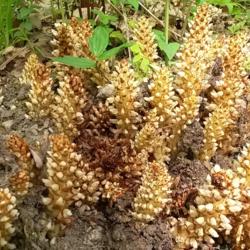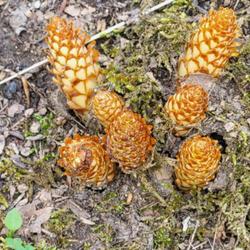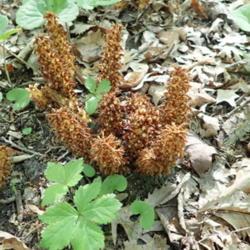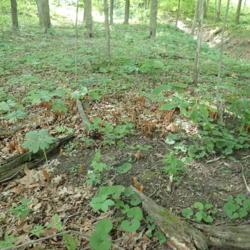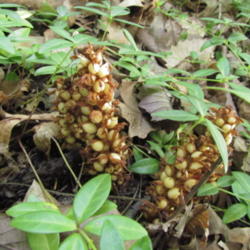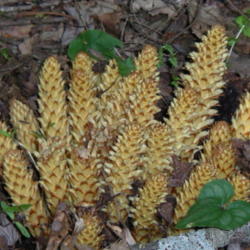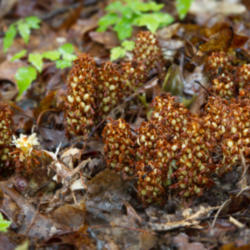General Plant Information (Edit)
| Plant Habit: |
Herb/Forb
|
| Life cycle: |
Perennial
|
| Sun Requirements: |
Partial or Dappled Shade
Partial Shade to Full Shade
|
| Water Preferences: |
Mesic
|
| Minimum cold hardiness: |
Zone 3 -40 °C (-40 °F) to -37.2 °C (-35)
|
| Maximum recommended zone: |
Zone 9b
|
| Leaves: |
Other: Leafless
|
| Fruiting Time: |
Late spring or early summer
|
| Flowers: |
Showy
|
| Flower Color: |
Yellow
Other: 4 to 8 inch tall, corncob like structure bearing yellow to cream.
|
| Bloom Size: |
Under 1"
|
| Flower Time: |
Spring
|
| Inflorescence Height: |
4-8 inches |
| Uses: |
Medicinal Herb
|
| Edible Parts: |
Flowers
|
| Eating Methods: |
Tea
Raw
|
| Wildlife Attractant: |
Bees
|
| Pollinators: |
Flies
Bumblebees
|
- Squawroot
- American Cancer-Root
- Bear Corn
- Cancer Root
- Squaw Root
- Accepted: Conopholis americana
- Synonym: Orobanche americana
Posted by
gardengus (Indiana Zone 5b) on Mar 6, 2016 7:24 AM concerning plant:
This plant is a parasite of the oak and sometimes beech trees. Its thick fleshy roots grow on the roots of oaks and it only flowers after about four years, appearing in the spring.
Looking rather like pale pine cones, the flower stalks are eaten by many mammals, including deer and bears, and the seeds are distributed throughout the forest in the feces of these animals.
Grows mostly in old hardwood forests and is native to the eastern US.
achlorophyllous- no chlorophyll
« Add a new plant to the database
« The Plants Database Front Page
